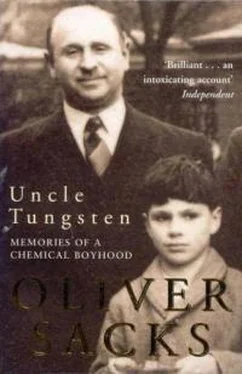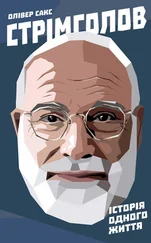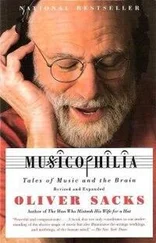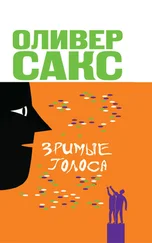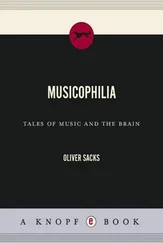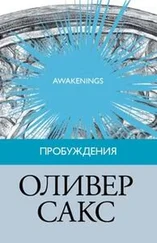Each radioactive element, they found, had its own characteristic rate of breakdown, its own ‘half-life.’ The half-life of an element could be given with extraordinary precision, so that the half-life of one radon isotope, for instance, could be calculated as 3.8235 days. But the life of an individual atom could not be predicted in the least. I became more and more bewildered by this thought, and kept rereading Soddy’s account:
The chance at any instant whether an atom disintegrates or not in any particular second is fixed . It has nothing to do with any external or internal consideration we know of, and in particular is not increased by the fact that the atom has already survived any period of past time… All that can be said is that the immediate cause of atomic disintegration appears to be due to chance.
The life span of an individual atom, apparently, might vary from zero to infinity, and there was nothing to distinguish an atom ‘ready’ to disintegrate from one that still had a billion years before it.
I found this profoundly mystifying and disconcerting, that an atom might disintegrate at any time, without any ‘reason’ to do so. It seemed to remove radioactivity from the realm of continuity or process, from the intelligible, causal universe – and to hint at a realm where laws of the classical sort meant nothing whatsoever.
The half-life of radium was much longer than that of its emanation, radon – about 1,600 years. But this was still very small compared to the age of the earth – why, then, if it steadily decayed, had all the earth’s radium not disappeared long ago? The answer, Rutherford inferred, and was soon able to demonstrate, was that radium itself was produced by elements with a much longer half-life, a whole train of substances that he could trace back to the parent element, uranium. Uranium in turn had a half-life of four and a half billion years, roughly the age of the earth itself. Other cascades of radioactive elements were derived from thorium, which had an even longer half-life than uranium. Thus the earth was still living, in terms of atomic energy, on the uranium and thorium that had been present when the earth formed.
These discoveries had a crucial impact on a long-standing debate about the age of the earth. The great physicist Kelvin, writing in the early 1860 s, soon after the publication of The Origin of Species , had argued that, based on its rate of cooling, and assuming no source of heat other than the sun, the earth could be no more than twenty million years old, and that in another five million years it would become too cold to support life. This calculation was not only dismaying in itself, but was impossible to reconcile with the fossil record, which indicated that life had been present for hundreds of millions of years – and yet there seemed no way of rebutting it. Darwin was greatly disturbed by this.
It was only with the discovery of radioactivity that the conundrum was solved. The young Rutherford, it was said, nervously facing the famous Lord Kelvin, now eighty years old, suggested that Kelvin’s calculation had been based on a false assumption. There was another source of warmth besides the sun, Rutherford said, and a very important one for the earth. Radioactive elements (chiefly uranium and thorium, and their breakdown products, but also a radioactive isotope of potassium) had served to keep the earth warm for billions of years and to protect it from the premature heat-death that Kelvin had predicted. Rutherford held up a piece of pitchblende, the age of which he had estimated from the amount of helium it contained. This piece of the earth, he said, was at least 500 million years old.
* * *
Rutherford and Soddy were ultimately able to delineate three separate radioactive cascades, each containing a dozen or so breakdown products emanating from the disintegration of the original parent elements. Could all of these breakdown products be different elements? There was no room in the periodic table for three dozen elements between bismuth and thorium – room for half a dozen, perhaps, but not much more. Only gradually did it become clear that many of the elements were just versions of one another; the emanations of radium and thorium and actinium, for example, though they had widely differing half-lives, were chemically identical, all the same element, though with slightly different atomic weights. (Soddy later named these isotopes.) And the end points of each series were similar – radium G, actinium E, and thorium E, so-called, were all isotopes of lead.
Every substance in these cascades of radioactivity had its own unique radio signature, a half-life of fixed and invariable duration, as well as a characteristic radiation emission, and it was this which allowed Rutherford and Soddy to sort them all out, and in so doing to found the new science of radiochemistry.
The idea of atomic disintegration, first raised and then retreated from by Marie Curie, could no longer be denied. It was evident that every radioactive substance disintegrated in the act of giving off energy and turned into another element, that transmutation lay at the heart of radioactivity.
I loved chemistry in part because it was a science of transformations, of innumerable compounds based on a few dozen elements, themselves fixed and invariant and eternal. The feeling of the elements’ stability and invariance was crucial to me psychologically, for I felt them as fixed points, as anchors, in an unstable world. But now, with radioactivity, came transformations of the most incredible sort. What chemist would have conceived that out of uranium, a hard, tungsteny metal, there could come an alkaline earth metal like radium; an inert gas like radon; a tellurium-like element, polonium; radioactive forms of bismuth and thallium; and, finally, lead – exemplars of almost every group in the periodic table?
No chemist would have conceived this (though an alchemist might), because the transformations lay beyond the sphere of chemistry. No chemical process, no chemical attack, could ever alter the identity of an element, and this applied to the radioactive elements too. Radium, chemically, behaved similarly to barium; its radioactivity was a different property altogether, wholly unrelated to its chemical or physical properties. Radioactivity was a marvelous (or terrible) addition to these, a wholly other property (and one that annoyed me at times, for I loved the tungstenlike density of metallic uranium, and the fluorescence and beauty of its minerals and salts, but I felt I could not handle them safely for long; similarly I was infuriated by the intense radioactivity of radon, which otherwise would have made an ideal heavy gas).
Radioactivity did not alter the realities of chemistry, or the notion of elements; it did not shake the idea of their stability and identity. What it did do was to hint at two realms in the atom – a relatively superficial and accessible realm governing chemical reactivity and combination, and a deeper realm, inaccessible to all the usual chemical and physical agents and their relatively small energies, where any change produced a fundamental alteration of the element’s identity.
* * *
Uncle Abe had in his house a ‘spinthariscope’, just like the ones advertised on the cover of Marie Curie’s thesis. It was a beautifully simple instrument, consisting of a fluorescent screen and a magnifying eyepiece, and inside, an infinitesimal speck of radium. Looking through the eyepiece, one could see dozens of scintillations a second – when Uncle Abe handed me this, and I held it up to my eye, I found the spectacle enchanting, magical, like looking at an endless display of meteors or shooting stars.
Spinthariscopes, at a few shillings each, were fashionable scientific toys in Edwardian drawing rooms – a new and uniquely twentieth-century accession, next to the stereoscopes and Geissler tubes inherited from Victorian times. But if they made their appearance as a sort of toy, it was rapidly appreciated that they also showed one something fundamentally important, for the tiny sparks or scintillations one saw came from the disintegration of individual atoms of radium, from the individual alpha particles each shot off as it exploded. No one would have imagined, Uncle Abe said, that we would ever be able to see the effects of individual atoms, much less to count them individually.
Читать дальше
